Tips and advice for buying a used forage wagon
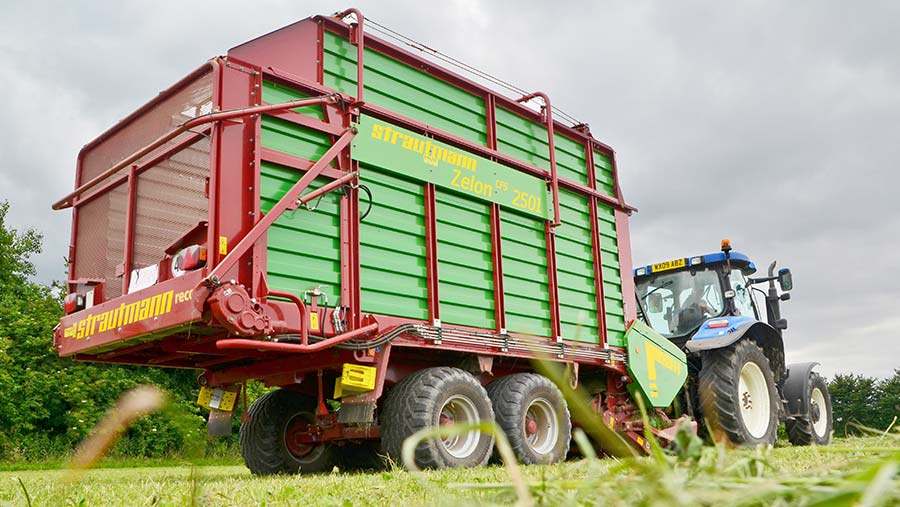
Forage wagons have come on a long way in the past couple of decades and now offer an affordable way for small farms to keep the job of grass cutting in-house, particularly if they are sourced second-hand.
Modern versions can achieve decent, consistent chop lengths and will match or even exceed the outputs of trailed foragers.
In fact, as their capacity and reliability has improved, they have replaced many of those old-school, tractor-pulled machines, as well as self-propelled choppers in some places.
It means there’s an abundance of options on the second-hand market. We took a trip to Devon for some advice from James and Deborah Boundy, who run Forage Wagons South West, specialising in servicing and selling used machines and parts.
See also: Tips for buying a set of second-hand triple mowers
Picking a machine
The first thing to consider when looking at buying a forage wagon – either new or used – is exactly what spec is required.
Like any piece of equipment, standard spec will vary, as will the optional extras. Most forage wagon manufacturers have two different spec bundles.
Generally “farmer spec” models have a number of knives that will produce a chop length of about 45mm, chain-and-sprocket drive to the rotor and eight-stud axles with 500mm- or 550mm-wide tyres.
In contrast, with a greater number of closer spaced knives, “contractor spec” wagons will generally get chop lengths down to 35-38mm.
Their rotor drive tends to come from a gearbox and they usually run on 10-stud ag/commercial axles with 620mm-wide rubber or bigger.
Often they will have some form of rear-wheel steering and air brakes, and they might also have a two-speed floor for faster unloading, as well as Isobus controls.
What are the extras worth?
If you’re looking at a second-hand wagon, then there are certain key features that add value.
- Rear-axle steering – adds £1,800-£2,000 (can be retrofitted for £2,500-£3,000). (Rear axle.jpg)
- Flotation tyres – as a rough guide, wider rubber adds £2,500-3,000. Bear that in mind when looking at the footwear of the wagon in question.
- Air-brakes – £500-£750. Retrofitting pneumatic actuators and pipework will tip the scales at £1,200-£1,400.
- Two-speed floor – bringing unloading time down below 30secs, a twin-pump floor-chain drive will typically add £500 to the value. (Hyd pump.jpg)
- Additive applicator – fitting a proper additive tank and pump kit to a wagon will cost £1,400-£1,600. Factor that into the purchase price if you’re looking at a wagon without one.
- Isobus – plug’n’play controls don’t tend to add value. In fact, if you’re looking at a wagon without a box and you don’t have an Isobus-compatible tractor, it could cost a few thousand pounds to get it up and running.
Capacity confusion
Anyone new to forage wagons will quickly spot there’s something funny going on with how manufacturers quote body capacity.
Unlike trailers, the industry norm is to talk volume rather than weight, which makes good sense.
However, there’s more to it than that – is the figure you’re looking at the actual cubic capacity of the wagon, or a number referring to what you can actually cram in?
If you look at the makers’ spec sheets, you’ll generally see a DIN measurement, which refers to a simple height x width x length figure.
Then there’s usually a second number tagged as something along the lines of “medium compacted load” or “maximum loaded volume” – this is generally an idea of what a compressed load of grass ends up as.
For example, a machine with a DIN body capacity of 31cu m will typically be able to squeeze in up to 50cu m of grass once the rotor and walking floor have done their bit to cram it all in.
What to look out for when buying a used machine
Ring hitch
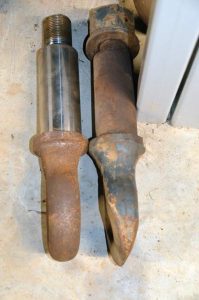
Although all UK-spec machines will have a low-level hitch, they will generally have a selection of bolt holes to enable operators to set the drawbar to run level.
More often than not, it’s a job that gets overlooked and they have a natural tendency to run downhill, resulting in premature ring wear.
It’s not a major fix but be aware that it will need putting right if it’s worn thin enough to skip off the hook.
PTO shaft and guards
Almost all wagons of contemporary vintage should be running wide-angle pto shafts, which makes good sense but has an impact on running costs.
While individual UJ bearings and yokes can be replaced, more often than not if one is on its way out then the whole lot will need doing, in which case the sensible thing to do is replace the whole shaft end.
That’s generally an eye-wateringly expensive job, coming in at anything between £750 and £1,200 for the bits.
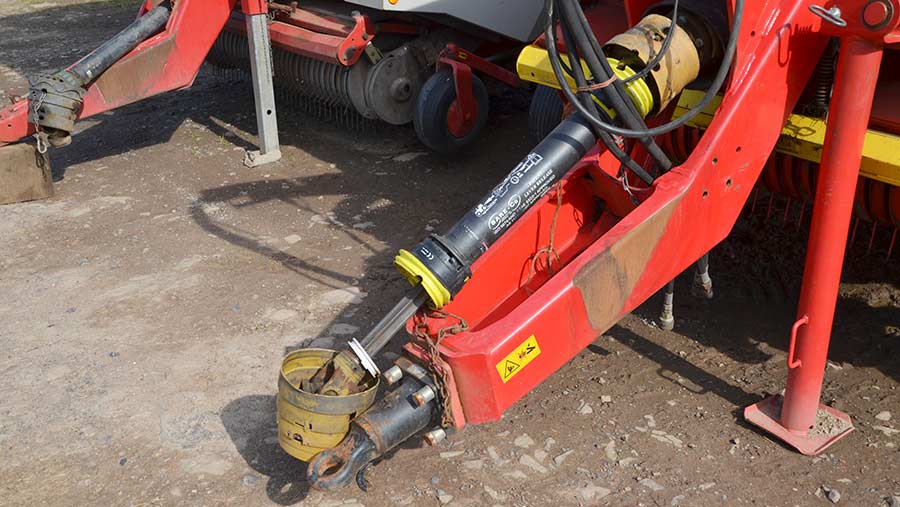
Driveline
Many farmer-spec wagons will employ a chain-and-sprocket drive to the rotor.
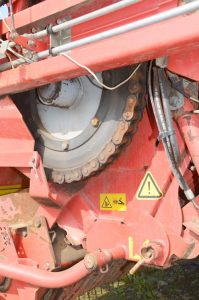
While this is simple and straightforward, it does require a scrupulous eye to keep it trouble-free.
Generally, chain tension needs to be tighter than normal – any slack can cause a whip effect, which will eventually result in a chain break.
In contrast, most contractor-spec machines will use a gearbox to transfer drive to the rotor – a much more robust, reliable solution so long as oil levels are kept topped up.
(Most Lely and Mengele wagons use gearboxes irrespective of spec)
Pick-up
There is a clear division between makers on how they approach the workings of the pick-up tine drive.
While Krone and Lely/Mengele have typically opted for cam-less arrangements, the remainder have stuck with rows of tines drawn in and out of work by a cam-track.
The former is a much simpler approach that requires less maintenance and has many fewer moving parts.
As regards the tines themselves, there’s a broad discrepancy in the pricing of replacement parts.
For example, a Lely tine sits at £3.24 and a standard Strautmann tine tops the table at about £12.
As for pick-up bands, Pottinger’s come in at about £20, Strautmann at £86 and Lely at £16.
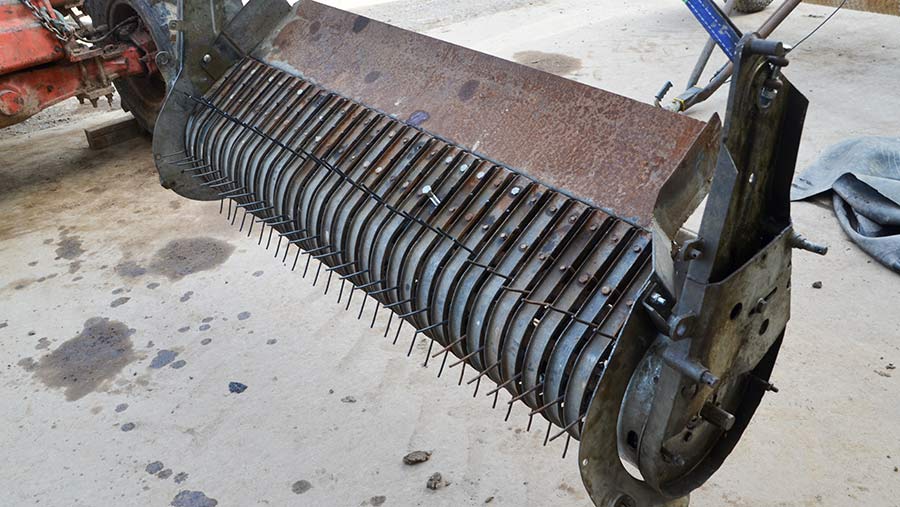
Rotor
Depending on the brand, the width of the rotor tine sections vary from 8mm to 25mm, giving varying degrees of clearance between them and the knives.
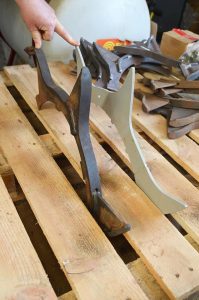
Logic would suggest the tighter the gap, the cleaner the shear of material as it passes through (much like a pair of scissors).
The downside is that small, foreign objects are less able to pass through so there’s less tolerance to damage.
Some makes and models start at 8mm-wide tines with big gaps either side of the knives, while others have chunky 25mm tines.
Put a sample of chopped grass from a wagon with narrow tines alongside one with wider ones and you’ll see a noticeably cleaner, more precise cut.
Look out for bent rotor tines. With the machine coupled up to the tractor, you’ll certainly hear if there’s metal-on-metal clashing.
Generally caused by foreign objects passing through the knife bank, if there’s more than one or two it’s a good indicator that the machine in question hasn’t had the healthiest of diets.
Resolving the issue is a case of pulling the rotor out, cutting off the offending tines and welding or bolting on new ones – a good half-day job.
Knives
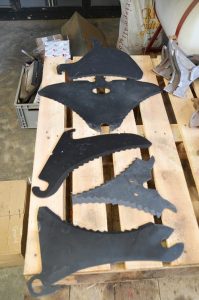
Assessing the wear on a set of knives is pretty straightforward.
As a rule of thumb, if they’ve worn back to the point that the serrations are no longer visible then they’ve probably done their time.
If that’s the case then you won’t get much change out of £1,000 for a replacement set (non-genuine).
Are genuine blades worth the money? Our man in the know is of the opinion that genuine knives have less of a tendency to break but don’t wear any less quickly than non-branded replacements.
So the answer is to fit genuine if you’re working in stony conditions, but price up the alternatives if not.
You will generally see a saving of 15-20% going non-genuine.
Be wary if you find blades of noticeably different sizes and vintages that would suggest replacements have been fitted when the majority are well worn.
The potential problem here is that taller, individual blades can score the rotor and it’s not unheard of for them slice right through the drum like a lathe after a few acres of work.
Knife bank
The knife bank takes a lot of battering and is a weak point on all forage wagons.
Throughout the season, it will spend much of its time dripping in the corrosive juice from chopped grass and will rarely get washed off.
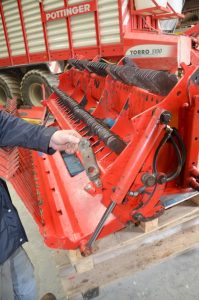
Its condition is a good indicator of how well the machine has been looked after.
It’s also the bit that takes all the shock-loading from unforeseen extras coming through in the swath, though they all have some form of break-back protection and the associated moving parts.
This is one particularly weak point on Pottinger wagons, which have a greater-than-average number of small components prone to wear.
Assessing this is tricky without pulling the whole bank out, but swinging it out from under the body will give an indication of its condition.
Lots of slack in the blade carriers will suggest a revamp is necessary – done properly, it’s a job that can easily soak up £800-£1,500 in parts and will take a good couple of days to complete.
Interestingly, Irish manufacturer Malone fits grease nipples to the individual break-back sections, providing an element of serviceability and hopefully extending the life of the knife bank’s wearing parts.
Body
There are generally two different approaches to body design.
The standard is a simple, regular rectangular box with the axles mid-mounted along the length of the chassis.
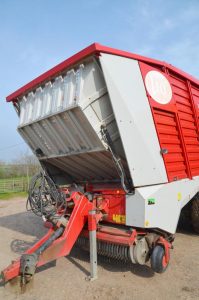
Lely (and others from time to time) offers the option of a body with a pivoting front headboard.
When filling, this is kept upright, but as the body reaches capacity, it is swung forward hydraulically to extend carrying capacity by up to 8-10cu m.
Although this doesn’t necessarily equate to extra cu m per load, it means the overall length of the wagon can be kept shorter than normal with less tail-swing making for a more manouevrable package.
The downsides are that there are fewer options for mounting an additive applicator on the headboard and it’s likely to be a more costly bespoke build.
Of course, there are more moving parts than usual, too.
It also appears to bring with it a certain weakness that sees the tinwork ripple and crimp after a few seasons’ work.
This is thought to be because the minute the tailgate lifts, the headboard is automatically raised to its vertical position to ensure the entire load empties.

The problem is that with grass up against the front at this point, it puts strain on the body and it is the tinwork that gives out first.
Many wagons will have a combination of ropes and bars running across and along the length of the body to keep things rigid and to stop grass spilling out over the top.
Unfortunately, these invariably end up getting bent, either on overhanging trees or unseen steelwork.
Tail-board
Different manufacturers tend to take a different approach to tail-board design.
While Strautmann, Krone and Claas opt for gates that lock down in place, the others go for arrangements that are secured purely by the up-and-over rams.
The big plus point of the former is that it makes for a stronger, more rigid structure when shut, but problems surface if the tail-board gets pranged.
Trying to straighten and realign bent locking versions is a tricky task that rarely makes for a satisfactory solution.
In contrast, free-swinging gates are a great deal more tolerant to knocks and scrapes.
Walking floors

Most wagon makers employ timber for the body floor, but they will offer the option of a steel deck.
Wooden floors tend to outlast metal as they’re less prone to corrosion – expect a good 20-30 years from timber.
As you might expect, replacement is straightforward, but the choice of board is critical.
The upper surface must be planed smooth to ensure chopped grass is easily ejected without hang-ups.
As regards the chains and slats of the walking floor, there’s rarely much issue.
However, the joining links will get thin after four to five seasons’ work. Replacement is a simple job.
Wheels and tyres
Often carrying a significant weight in the field, most wagons tend to be shod on soil-friendly flotation rubber – anything between 500mm and 710mm wide.
Uneven wear – often the shoulders – is a sign that they’ve been run at lower than recommended pressures.
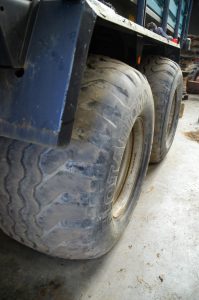
But rather than wear, it tends to be cuts and stone damage that spell the end for most tyres.
They are not a common stock item with many UK tyre distributors, and a large proportion of machines are fitted with either Vredesteins from Holland or Finnish Nokians.
So in season you might struggle to get an emergency replacement in a hurry.
On that basis, it’s worth considering shelling out the extra on a spare to have in the workshop.
Expect to pay £1,400-£1,800 for a complete wheel and rim assembly.
Replacement tyres generally come in at £600-£1,100 each.
What to pay?
The key thing to look at is the load count as an indicator of the work a machine has done.
To do that you’ll need to hitch the control box up to a tractor.
Be a bit wary of wagons with replacement boxes – it will often mean the clock has been reset.
As an average in Forage Wagons SW’s experience, most farmer-owned wagons clock 300-500 loads per year, but it’s not unusual for contractor wagons to top 3,000 loads.
Lower-spec wagons may not have a load counter.
As a rule of thumb, with a 50cu m wagon, it’s about an acre of grass per load (50cu m) as average across all cuts.
So if you know the acreage of the farm it’s come from, that will be a pretty good indicator.
Here are a few examples of wagons that have recently sold and comparable values.
They give a good indication of what machines of different brand, spec and condition tend to fetch.
Pottinger Torro 6010 Combiline
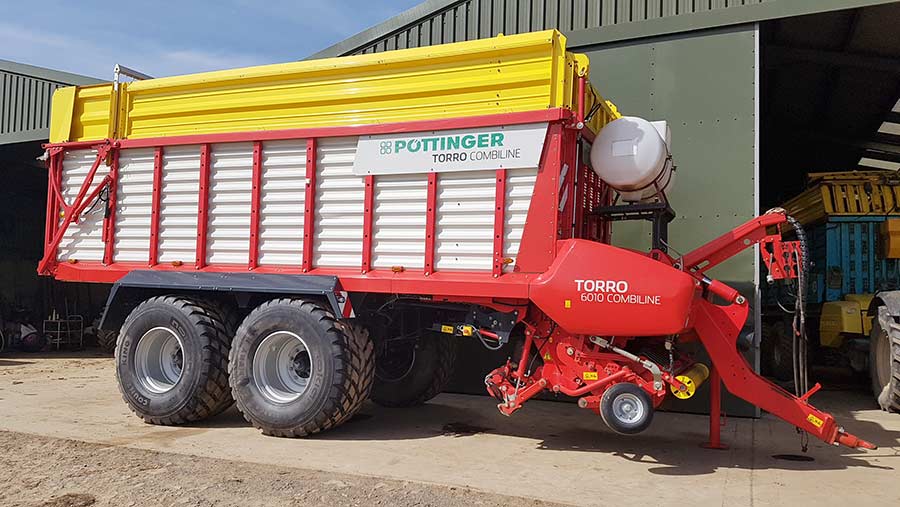
- Year 2017
- Load count 580
- Capacity 31.5cu m DIN (60cu m compressed)
- Condition Good
- Spec/extras 45 knives (34mm chop length), 10-stud axles, air brakes, 710mm tyres, rear steering, additive tank
- Price £56,000-£62,000
Lely Tigo XR65
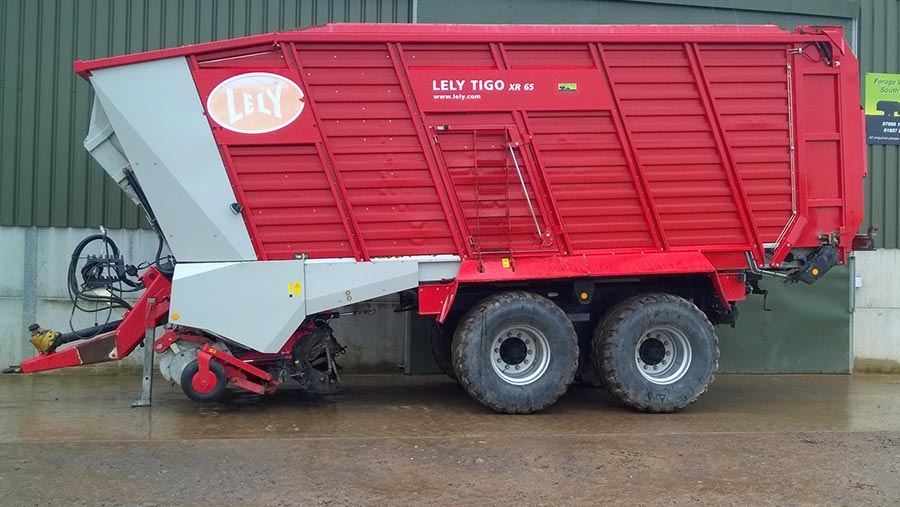
- Year 2014
- Capacity 38cu m DIN (65cu m compressed)
- Condition Average/poor
- Spec/extras Pivoting headboard, 45 knives (37mm chop length), 10-stud axles, air brakes, rear steering, 710mm tyres
- Price £34,000-£38,000
Strautmann Mega Vitesse 3401
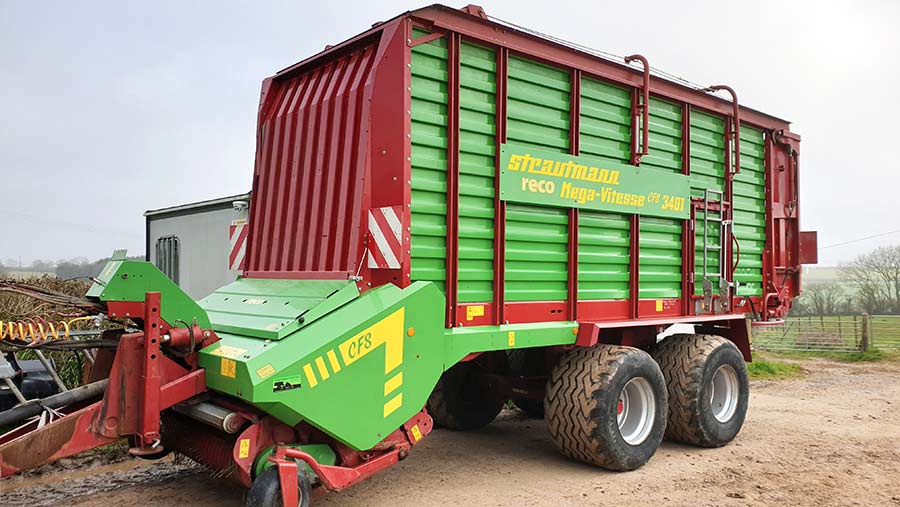
- Year 2013
- Load count 3,800
- Capacity 32cu m DIN (57.6cu m compressed)
- Condition Average
- Spec/extras 40 knives (39mm chop length), air brakes, 710mm tyres, rear steering
- Price £31,000-£35,000
Krone MX 320 GL
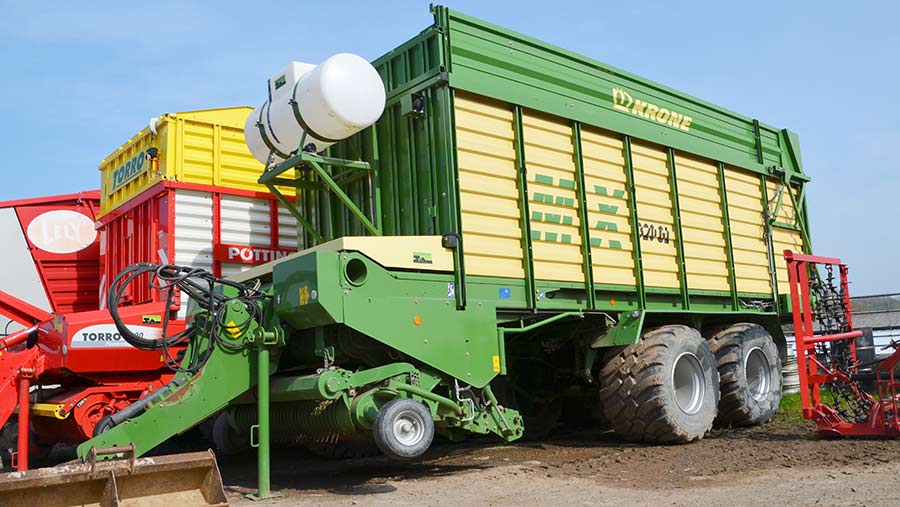
- Year 2015
- Load count 700
- Capacity 31cu m DIN (50cu m compressed)
- Condition Like new
- Spec/extras 41 knives (37mm chop length), 10-stud axles, rear steering, 710mm tyres, air brakes, additive applicator
- Price £36,000-£44,000
Claas Quantum 5500 P
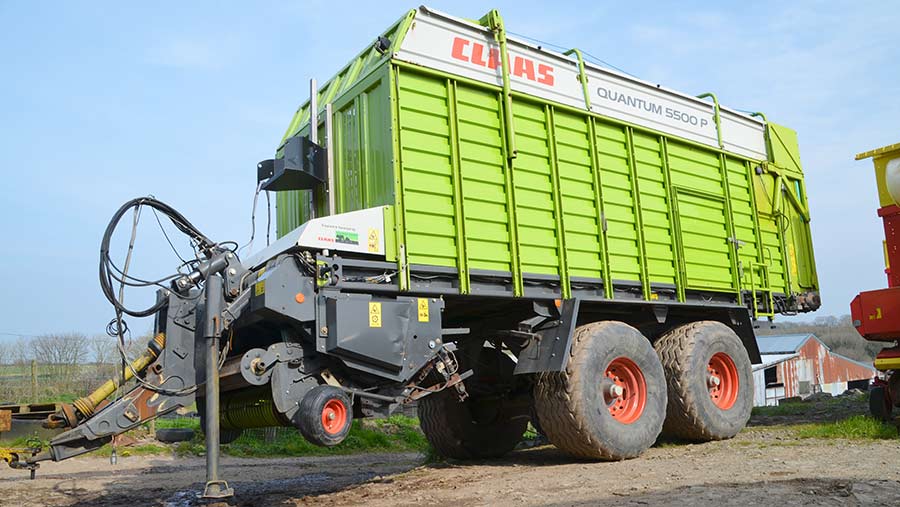
- Year 2009
- Load count 2,500
- Capacity 34cu m DIN (58cu m compressed)
- Condition Good
- Spec/extras 33 knives (45mm chop length), 10-stud axles, rear steering, 650mm tyres
- Price £24,000-£28,000
Mengele RotoBull 6000

- Year 2008
- Load count 5,700
- Capacity 30cu m DIN (50cu m compressed)
- Condition Average for the age
- Spec/extras 38 knives (37mm chop length), 710mm tyres, 10-stud axles, rear steering
- Price £14,000-£18,000
Pottinger EuroProfi 4500
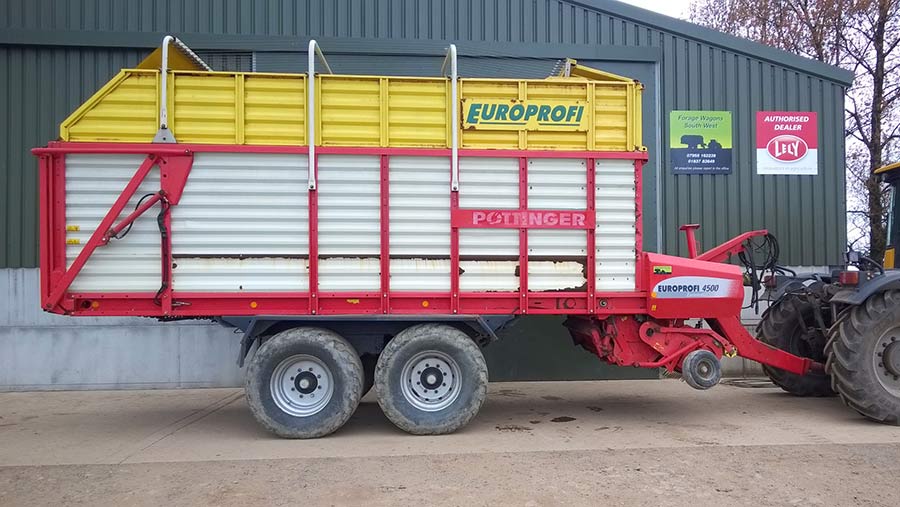
- Year 2010
- Load count 3,200
- Capacity 28.5cu m DIN (45cu m compressed)
- Condition Average
- Spec/extras 39 knives (40mm chop length), 8-stud axles, 550mm tyres
- Price £18,000-£22,000

